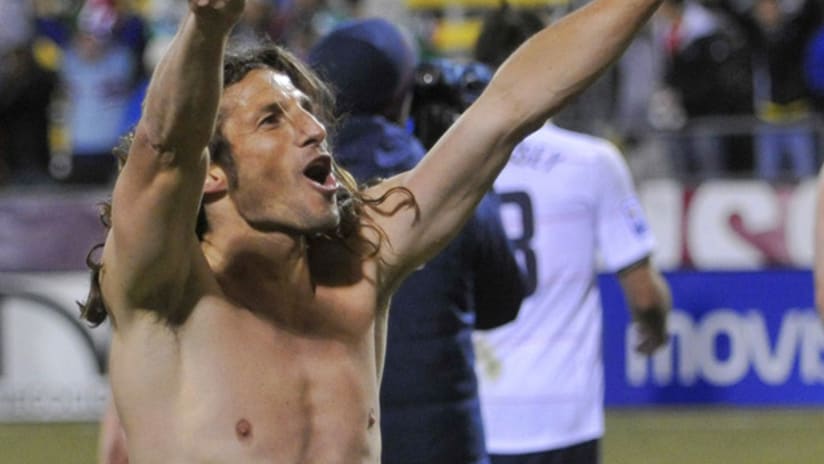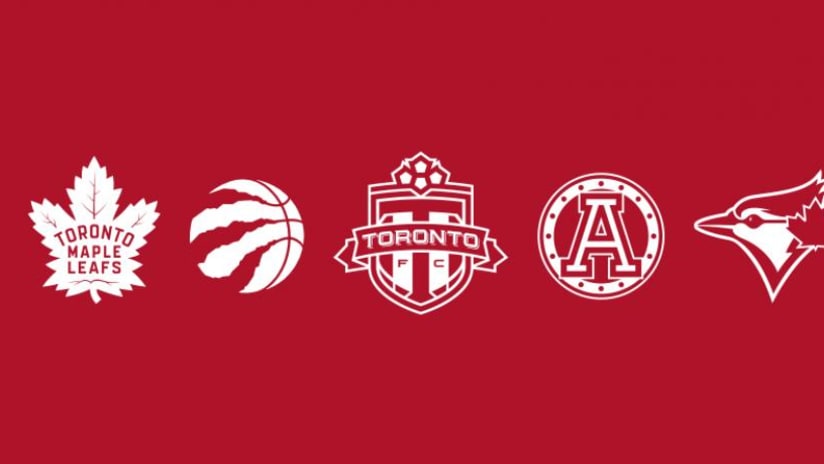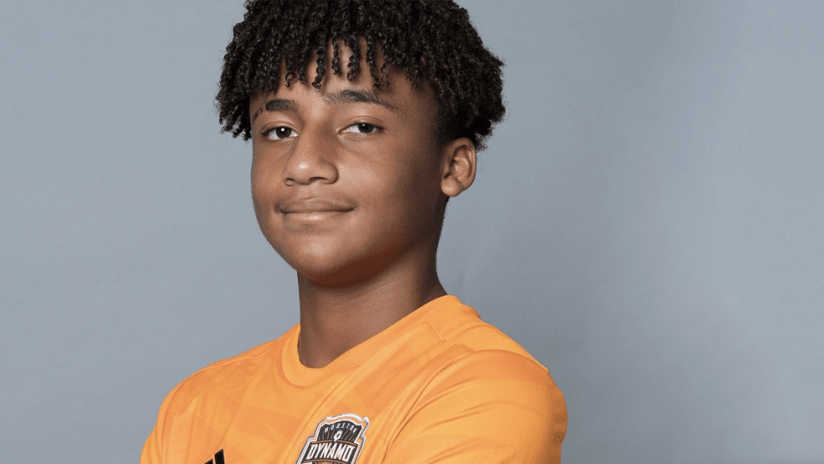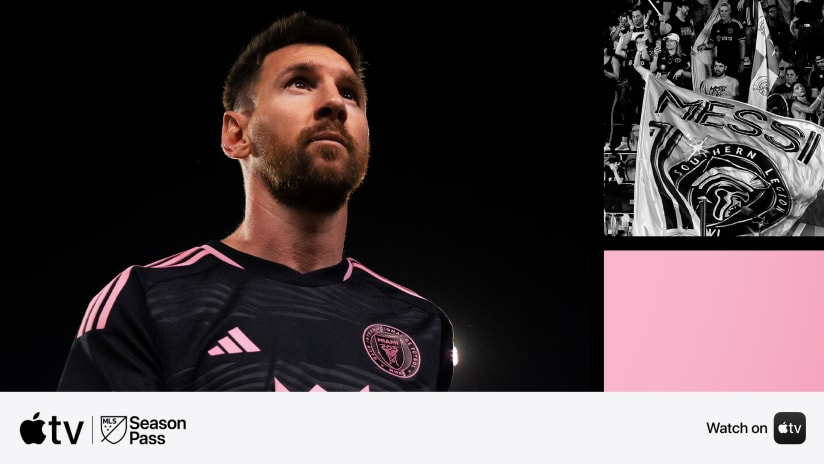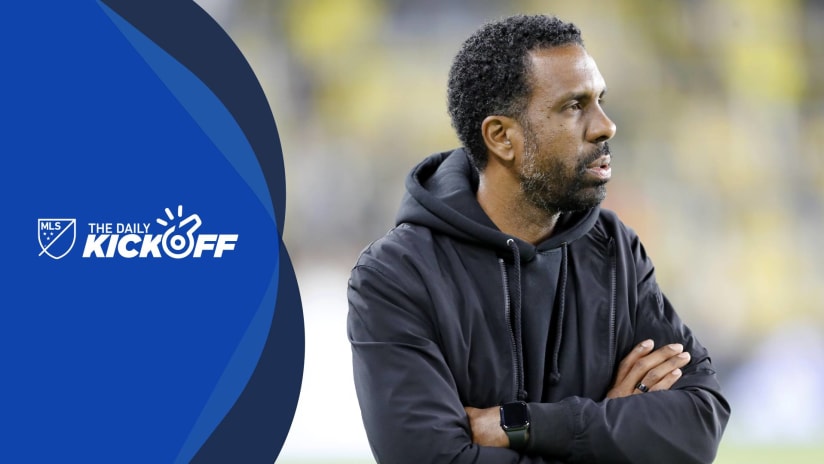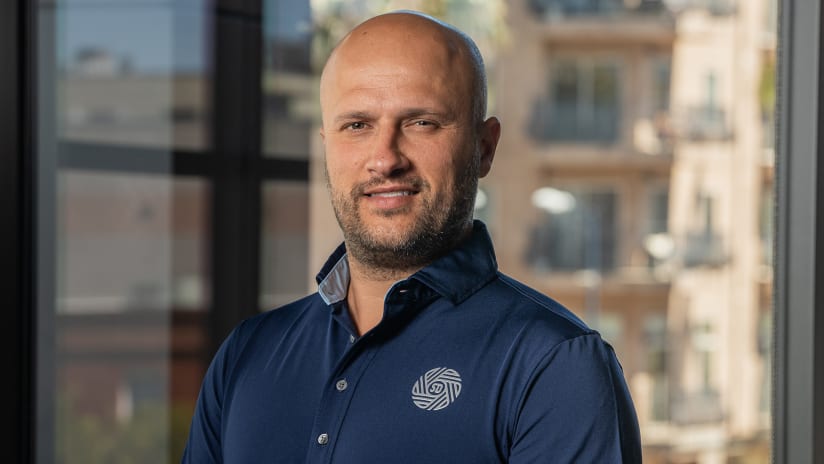COLUMBUS, Ohio – If you're looking for an apt one-sentence preview of Tuesday's immense World Cup qualifier between Mexico and the US national team (8 pm ET; ESPN/UniMas), Frankie Hejduk has got you covered:
“It's going to be raging, bro.”
Hejduk was his usual, irrepressibly enthusiastic self at the USMNT's training session on Monday afternoon, bubbling with excitement as he took in his old team's practice and received a litany of warm greetings from fans and former teammates.
When fans arrive at Crew Stadium on Tuesday evening, one of the first things they'll see is an enormous, full-color rendering of Hejduk – wearing his old USMNT jersey, naturally – immersed in a teeming crowd of US supporters at a past US-Mexico match and clearly loving it.
Though he mischievously declines to delve into the specifics, he is playing a similar hype man/cheerleader role again this week as he seeks to further amp up the excitement around what is arguably already the hottest event in North American soccer.
“We'll see!” he said with a laugh. “They don't give me too much of a leash, put it that way. They kind of let me go.
“Luckily with the role that I have with the Crew, I'm able to not only be a part of the game on the field, but now off the field, and still kind of be a piece of it and still be around the fans and be able to really, really enjoy the game. At times I do feel like I'm out there! I'm with the fans, I'm running around the stadium.”
Few have a deeper perspective on this matchup, this venue and what it all means than Hejduk, the workaholic wingback who ran his heart out for the USMNT and the Columbus Crew for so many years before retiring last year to become the Crew's “brand ambassador.”
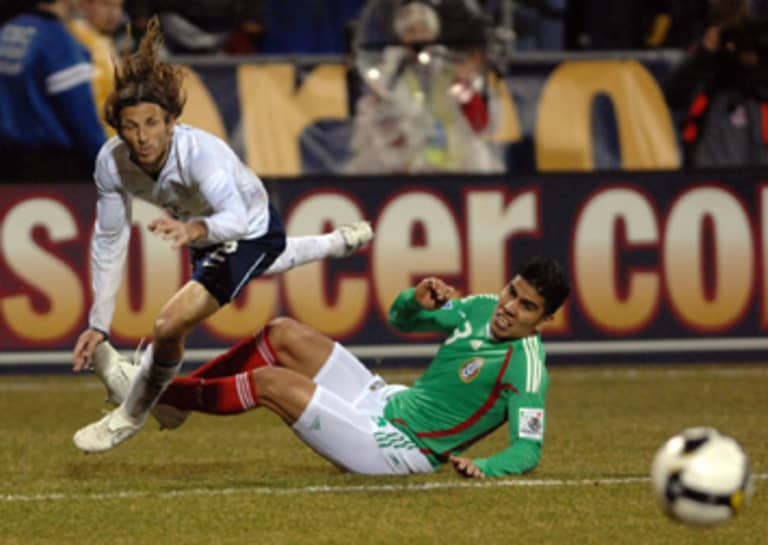
That title also aptly describes his role in the national team's fruitful history in central Ohio. Hejduk was an unused substitute for “La Guerra Fria,” the 2-0 US qualifying win over Mexico on a frigid February night in 2001, then logged a full 90 minutes in the Yanks' victories in '05 and '09. On Tuesday, he fondly recalled the birth of the “dos a cero” legend in Columbus.
“I remember being on the bench watching that game and [thinking] that was maybe one of the coldest games I've ever been a part of – because I wasn't playing,” he said. “For us on the bench it was a little bit tough to be at. But the energy, even for that game, being so freezing – the crowd brought it, dude. They loved it, and I was like, 'Wow!'
“The thing about the '01 game that sticks out the most was when Mexico didn't come on the field. That was the one time that I thought, 'Psychologically, we have Mexico. They're so cold that they're not even coming out for warmups.' So I was like, 'Wow, this is the perfect place.' This is the first time that ever happened, I think, in America ... that told me something right there, that this could be a place that could be magical.”
Beyond the home-field advantage that Crew Stadium has always offered the USMNT, Hejduk also sees fitting symbolism in the compact park – the first soccer-specific stadium in modern US history when former Crew owner/operator Lamar Hunt funded its construction in 1998-99 – playing host to the most hotly-contested game of the national team's quadrennial calendar.
“This is something special for this city and for this stadium,” he said. “I feel like this stadium deserves this game, not only because of the fans – as we all know, they're crazy here and it's one of a couple places in America that you can get somewhat of a pro-American crowd playing against Mexico, which you don't see very often.
“At one point, this stadium kept MLS and US soccer alive. The Hunts came in, built the stadium at a time when the league was kind of in a weird spot, kind of plateauing, and didn't know really which way it was going to go,” he continued. “They built this stadium and from there on out, the rest is history. Now we have, what, how many soccer-specific stadiums out there? ... So this place, I think, traditionally re-started soccer again in America. For that reason alone, I think this stadium deserves it.”

